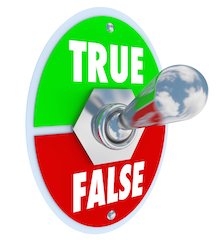Suitability remains an issue of concern for financial services regulators. Even though regulatory bodies have promulgated tighter regimens for assuring suitable sales, especially to seniors, evidence persists that financial advisors often recommend unsuitable products and/or fail to document the discussions they have with clients about risk and appropriate product solutions.
Consequently, the National Ethics Association and its errors-and-omissions affiliate, EOforLess.com, encourage all financial advisors to get back to basics when it comes to making suitable product recommendations.
Last month, we shared basic guidance on the topic as well as information for insurance-licensed advisors. In this article, we’d like to zero in on the suitability concepts securities brokers must understand to avoid legal and errors-and-omissions insurance problems in the future.
However, let’s pull the camera back for a minute. It’s important to state that suitability has been an issue in the securities industry for decades, with about a third of all FINRA arbitration claims arising from unsuitability claims. However, marketing conditions and case law have evolved, spurring FINRA to update NASD Rule 2310 with FINRA Rule 2111. Released in 2012, the latter rule features broader definitions and a stronger focus on product recommendations than the prior rule did. It also developed a new three-part test that brokers must follow in order to prove their sales are suitable.
The first key difference between the new and old suitability rules was the notion of “investment strategies.” According to Robins Kaplan LLP, a securities law firm with offices in Boston, New York, and five other U.S. cities, NASD Rule 2310 concerned itself with the suitable “purchase, sale, or exchange of any security.” Rule 2111 now applies suitability to any “recommended transaction or investment strategy involving a security.” The law firm explains the broader focus this way: “…imagine a broker recommends that a client sells property in order to invest the profits in a retirement account. In this scenario, the entire recommendation, even though it includes non-security property, is considered part of the overall strategy when looking at a potential suitability problem.”
The firm also points out that broadening the suitability focus to include investment recommendations and not just securities products also means brokers must maintain suitability when they suggest holding a security regardless of whether they sold the security initially to the client.
After putting investment strategies at the center of the new rule, FINRA then mandated three types of suitability for brokers to follow in order to remain in compliance: reasonable basis, customer specific, and quantitative.
Reasonable-basis suitability means that brokers must first understand the products they sell before recommending them to clients. What’s more, not understanding a product can still create compliance problems even if the recommendation in and off itself is suitable.
Customer-specific suitability means a broker must make only recommendations that are consistent with the customer’s “investment profile.” To determine that profile, the broker must uncover more information about the customer than before, including:
• Age
• Other investments held
• Financial situation and needs (including data about income and net worth)
• Tax status
• Investment objectives
• Investment experience
• Investment time horizon
• Liquidity needs
• Risk tolerance
According to Robins Kaplan, brokers must use reasonable diligence to secure this information (i.e., they must ask for it.) But further efforts may be required if the person supplies inaccurate answers or shows diminished capacity.
Quantitative suitability means the broker must have a reasonable basis to believe the number of securities transactions they make for a client is not excessive given the person’s profile. Under this suitability type, a securities purchase might be suitable in and of itself, but not suitable if repeated 10, 50, or 100 times.
Finally, Rule 2111 requires brokers to always act in the best interests of a client, recommending “client-first” solutions rather than those that boost their own commissions or help their firms serve other agendas.
Now, following suitability guidelines will be pointless if brokers can’t prove to regulators that they did so. To this end, Robins Kaplan encourages brokers to keep “basic records to reflect that (they) understood the product or strategy and used the client’s investment profile to create the suitable recommendation.”
Because securities suitability is a complex topic, EOforLess urges brokers to tap legal and compliance resources at their broker dealers for further guidance. For advanced understanding, they should also read the actual FINRA suitability rule, which can be found here.
• See also: Insurance Suitability: It’s back-to-basics time!
Harry J. Lew is Chief Content Officer at EOforLess. For more information on affordable errors and omissions insurance for low-risk real estate broker/owners, please visit E&OforLess.com. For information on ethical sales practices, please visit the National Ethics Association’s Ethics Center.













